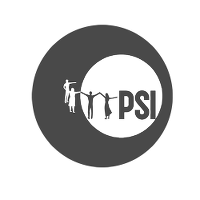By Cecilia Alemany and Gita Sen, Development Alternatives with Women for a New Era (DAWN)
Why are women’s rights central to advancing global governance? The UN Secretary-General’s 2019 Report on the SDGs recognizes that “there is simply no way that we can achieve the 17 SDGs without achieving gender equality and empowering women and girls”. [fn] UN (2019), p. 3. [/fn] We argue that taking gender equality seriously in global governance is essential to advancing gender equality and women’s human rights at both global and national levels. Equally important, advancing gender equality, women’s empowerment and women’s human rights are critical to strengthening global governance, particularly with regard to debt relief, global trade, technology transfer and institutional coherence.
Advancing women’s rights – the role of global governance
The pervasiveness of gender inequality and violations of girls’ and women’s human rights, despite variations across countries and regions in their forms, manifestations and intensity, co-exists with national level governance systems that are highly uneven in how they tackle this challenge. Measuring the extent and effectiveness of women’s participation in different levels of national governance is difficult without data. As a proxy, representation in national parliaments ranges from 0 to 61.3 percent, with the global average being 24.2 percent as of January 2019. [fn] Ibid., p. 10. [/fn] In addition to gender stereotypes and patriarchal practices that undermine women’s capacity to engage in political processes, other obstacles for women in entering in politics or parliament in different regions are “lack of constituents and lack of financial resources”. [fn] Baliamoune-Lutz (2016). [/fn]
This is compounded by varying levels of political commitment as manifested in national laws, policies and social environments. Half of the world’s people cannot be left to the vagaries of national governance systems without clear commitments, institutional mechanisms and funding at the level of global governance. Such central elements of women’s human rights as the recognition and valuation of unpaid care work, and the rights of informal sector workers including in global production and value chains where women predominate cannot be adequately addressed at the national level alone.
Trans-boundary effects include, to name a few, the presence of very large numbers of migrant and undocumented workers and refugees who are women, the scourge of violence including targeted rapes, kidnapping and other forms of sexual violence in conflict situations, and responsibility for household livelihoods and the survival of family members in the face of the extreme weather, droughts, flooding and other consequences of human-induced climate change. Such effects need to be tackled globally with full recognition of women’s positions; their oppression and subordination under patriarchal systems, old and new; and all their human rights – economic, political, social, cultural, including sexual and reproductive rights. The global ‘bully pulpit’ of the SDGs as well as real changes in global governance that give institutional positioning and importance to respecting, protecting, promoting and fulfilling these rights can go a considerable way towards encouraging similar changes at national levels.
Without substantive advances in SDG 17 that take such trans-boundary effects seriously, existing efforts to advance SDG 5 could be undermined. The incorporation of women’s rights and gender equality in global institutional frameworks, structures, rules and regulations, and effective participation by feminist and women’s rights groups in international bodies governing development are essential.
There is certainly greater global visibility thanks to #MeToo, and public manifestations of the need for recognition and inclusion of gender equality from the Bretton Woods Institutions as well as some Northern governments such as Canada and Sweden. But, many forms of gender discrimination remain unrecognised and unspoken, while many harms to women and shortfalls in governance, as well as potential for change remain hidden. Visibility and positive discourses about women’s human rights, including sexual and reproductive health and rights, through women’s mobilizing for the UN conferences of the 1990s as well as for the SDGs, has also generated vicious backlash from religious and other patriarchal networks operating globally. Overall, the global governance picture for gender equality and women’s human rights remains decidedly mixed.
Strengthening global governance: the importance of gender equality and women’s human rights
Feminist analysts, advocates and activists have argued that incorporating women’s human rights and gender equality into global governance has the potential for fundamental transformation of its content and institutions. This argument has many dimensions – the importance of unpaid care work for the design of macroeconomic policies (fiscal, monetary, taxation and exchange rate); the role of women as informal sector workers for labour and social protection policies and institutions; the implications of women’s responsibilities for household survival and subsistence for policies ranging from trade, public-private partnerships (PPPs), and investment on the one side to climate change and conflict prevention and mitigation on the other. Substantive changes in global governance content requires changes in its institutions. But power, as we have both argued elsewhere, is still very masculine [fn] See, e.g., IPS (2008). [/fn] everywhere, and it is hard to find women’s rights activists in international financial institutions (IFIs), or in macroeconomic, trade, digital economy, or fiscal debates in mainstream institutions or among government officials.
Bringing more women to the table: Some international organizations are responding to the recent amplification of women’s voices by having more women at the table, understanding that all-male panels/bodies give the wrong message. By itself this advance does not guarantee that gender equality or women’s rights will be effectively incorporated but it does push towards transforming the culture of all-male panels/bodies that have existed for too long in the international institutions, and remain in many spaces (on finances, taxes, IFIs boards, infrastructure, etc.). Another response is to recognize that gender equality does not happen sui generis but requires affirmative actions and policies. Some global organizations such as the World Bank have been including gender impact analyses in project baselines and ongoing monitoring. But such advances at the project level can be undermined by regressions at the macro or policy level. In terms of parity efforts, for example, in 2017 the UN Secretary-General launched a System-wide Strategy on Gender Parity, recognizing that “there is an inverse relationship across the system between seniority and women’s representation: the higher the grade, the larger the gap in gender parity”. [fn] UN Women (2017), p. 6. [/fn] Implementation of this strategy is also supposed “to strengthen further geographic diversity, particularly from underrepresented groups”. [fn] Ibid, p. 8. Results of this strategy need to be seen, since beyond merits and countries’ quotas, in some cases candidates’ countries’ funding leverage may act as a boost to influence higher level appointments. In practice, this may undermine Southern women’s access to senior positions and even more so for women coming from the feminist movement that are not necessarily the preferred candidates for their countries’ governments. [/fn] Having a UN gender parity strategy and a Secretary-General who calls himself a feminist are positive, but the general leadership in the UN is still very masculine. Only one-third of leading positions are occupied by women while they represent two-third of the lowest professional positions. [fn] Ibid, p. 10. In Director and Under-Secretary positions only 32 percent in average are women and there is a significant over-representation of women in more junior levels; in the highest professional levels women are 36 percent and in the lowest 61 percent. [/fn]
Some organizations are promoting women’s participation or even equal participation in boards or executive bodies, as a way to influence top-level governance and policy decisions. But the recent epiphany about gender equality by the head of the IMF does little to change the fact that the IMF remains wedded to austerity policies and PPPs that raise the cost of social services, and reduce access to public infrastructure and social protection, harming many of the poorest among the world’s people, including large numbers of women. On the other hand, when forums such as the G20 [fn] See the Special Contribution II.1 in this report. [/fn] or the World Economic Forum respond to the current demands for inclusiveness, they tend to invite the most privileged women including business women.
Financing women’s organizations, gender equality and development: There are several efforts to measure funding for women’s organizations, [fn] Baliamoune-Lutz (2016.) [/fn] for gender equality through national budgets (gender sensitive budgeting and analysis) and development cooperation (through the OECD DAC gender marker). [fn] The OECD DAC applies a gender equality policy marker to ODA creditors’ reports that provides a basis to understand how ODA contributes to gender equality according to funders. See http://www.oecd.org/dac/gender-development/dac-gender-equality-marker.htm. [/fn] Gender budgeting - and not necessarily more public budget allocations to gender equality- is seeing progress since there is further implementation of gender responsive budgeting according to the Secretary-General. [fn] UN (2019), p. 2. [/fn] More recently, we have seen an articulation of so-called feminist foreign policies including funding for women’s organizations by some governments. This has the potential to engender significant shifts in both policies and participation. But such measures have not yet changed the ways in which these governments hold their own corporations to account for abuses of human rights and negative impacts on women’s livelihoods in the global South, or to strengthen women’s rights systemically in international governance.
Feminist and women’s rights organizations are not necessarily the preferred partners of funders even when they mark their funding as a contribution to gender equality. Traditional funders or donors, and even UN agencies in the field, increasingly tend to partner with and fund women’s business organizations. IFIs and financial corporations are promoting “innovative financial tools” such as “gender bonds” launched by the World Bank and private financial institutions, [fn] The World Bank has several bonds tagged to sustainable development, and on 8 March 2019 launched bonds “to raise awareness for the importance of investing in women’s empowerment in rural areas”. Offering “will be made only by means of a prospectus containing detailed information that will made available through HSBC” since it is a public-private financial initiative. These bonds “bring the World Bank’s total issuance of bonds that raise awareness for gender equality to US$840 million”, and it has also issued US$ 2 billion in bonds to highlight efforts that support women and children’s health. See https://www.worldbank.org/en/news/press-release/2019/03/08/world-bank-bond-highlights-importance-of… and www.worldbank.org/debtsecurities. [/fn] and there is growing interest in the financial community towards so-called ‘gender lens investing’. [fn] See https://digital-iadb.lpages.co/idb-invest-gender-lens-investing/. [/fn] The direct financial contribution of traditional gender-marked ODA disbursed to governments and civil society in developing countries was only 12 percent of total gender-marked ODA in 2017. [fn] OECD Creditor Report System, total aid projects targeting gender equality and women’s empowerment, gross disbursements in 2017 from all DAC donors to development countries versus Government and Civil Society sector allocation to aid projects targeting the same thing. [/fn] In addition, the narrow vision of development cycles promoted by many funders, through short-term projects of one or two years, that allocate resources to what funders want and need, has been undermining women’s rights and feminist groups. The negative implications are severe for these groups’ independence, advocacy and mobilization capacities in many countries where human rights in general and women’s rights in particular are being attacked by repressive governments.
In sum, many of the ‘innovative financial tools’ respond to a reductionist vision of gender equality as smart investments that eschew attention to how macroeconomic policies, international trade rules, tax regimes, global value chains with women at the lowest levels, global governance imbalances, the erosion of multilateralism, and reduced policy space for developing countries harm women, especially the poorest.
Advancing gender equality and women’s human rights
Advancing gender equality and women’s human rights in formal and substantial terms, ensuring policy coherence across the development spectrum, and strengthening women’s rights groups’ and feminists’ participation in national and global governance are still large challenges.
Gender equality and women’s rights analysis in development projects, policy design and recommendations from international institutions in general can contribute to a more inclusive governance. The IMF and the World Bank group should acknowledge, via formal Board-approved policy positions, the obligation not to undermine but rather to promote gender equality through their role in shaping or determining the macroeconomic policies of developing countries. [fn] Bretton Woods Project (2019). [/fn]
Policy coherence can be promoted in many different ways, such as by ensuring that transnational corporation and country representatives in international organizations such as the World Bank, IMF or the WTO take decisions and agree on negotiated clauses that do no harm, and that respect and protect human rights and international obligations and standards, such as ensuring favourable conditions of work, [fn] ICESCR (1966), art. 7; CEDAW (1979), art. 11. [/fn] ensuring social protection for women, mothers and children, [fn] ICESCR (1966), art. 10. [/fn] respecting the commitments to the Convention on the Elimination of all Forms of Discrimination against Women (CEDAW) at the national level, among other rights and development goals internationally agreed.
It is important to recall, with feminists and women’s rights groups, that there is “no empowerment without rights.” [fn] Sen/Mukherjee (2014). [/fn] To leave no one behind, all development actors must strengthen human rights including women’s rights in existing policy and funding initiatives and implementation of all SDGs nationally and internationally, ensuring that all these efforts incorporate human rights principles and standards, and contribute to the implementation of international agreements such as CEDAW and the Beijing Declaration and Platform for Action. [fn] See UN Women (2018). [/fn]
To strengthen women’s rights in gender equality funding (traditional and innovative), beyond bilateral or regional efforts, governments should secure full funding for the treaty bodies’ system and ensure that their sessions are implemented; and that they incorporate women’s organizations’ voices and recommendations as has been its practice until now. Particularly, securing funding needed to enable the CEDAW Committee to implement its mandate under the Optional Protocol, which allows individuals to bring complaints of violations of women’s rights, is critical as it now seems under threat along with other treaty bodies, because of lack of funding. Additionally, at the multilateral level, the insignificant funding allocated to entities of the UN system, including UN Women, is also a signal of weak political will to support multilateral institutions committed to and leading on women’s empowerment and gender equality. This inadequate funding also undermines the UN system’s capacity to partner and fund women’s human rights and feminist groups in the global South, and drives the pressure to partner with the private sector.
Strengthening participation and voice for women’s rights in global governance requires ensuring direct participation by women’s rights and feminist organizations in governance fora and bodies, not through women philanthropists or women entrepreneurs. The voices of the movement especially from the global South must speak and engage for and by themselves. An important criterion would be to ensure this is built into any new spaces that may be created.
Cecilia Alemany is a member of the Executive Committee of Development Alternatives with Women for a New Era (DAWN) and is on DAWN’s and IT for Change’s common initiative on Digital Justice. Gita Sen is DAWN’s General Co-coordinator.
Baliamoune-Lutz, Mina (2016): The Effectiveness of Foreign Aid to Women's Equality Organisations in the MENA. In: Journal of International Development Vol. 28, Issue 3, pp. 320–341.
https://doi.org/10.1002/jid.3214
Bretton Woods Project (2019): Gender-Just Macroeconomics. Engaging the IMF and the WB. London.
www.brettonwoodsproject.org/wp-content/uploads/2016/10/Gender-Just-Macroeconomics-final-1.pdf
CEDAW (1979): Convention on the Elimination of All Forms of Discrimination Against Women. New York.
https://www.un.org/womenwatch/daw/cedaw/text/econvention.htm
ICESCR (1966): International Covenant on Economic, Social and Cultural Rights. New York.
https://www.ohchr.org/Documents/ProfessionalInterest/cescr.pdf
IPS (2008): Q&A: Political power is still very masculine, Interview with Cecilia Alemany, Association for Women's Rights in Development. 30 July 2008.
www.ipsnews.net/2008/07/qa-quotpolitical-power-is-still-very-masculinequot/
OECD (2019): Measuring Distance to the SDG Targets 2019. An Assessment of Where OECD Countries Stand. Paris.
https://doi.org/10.1787/a8caf3fa-en
Sen, Gita/Mukherjee, Avanti (2014): No Empowerment without Rights, No Rights without Politics: Gender-Equality, MDGs and the Post-2015 Development Agenda. In: Journal of Human Development and Capabilities Vol. 15 (2–3), pp. 188–202.
https://doi.org/10.1080/19452829.2014.884057
UN (2019): Special Edition: Progress towards the Sustainable Development Goals. Report of the Secretary-General. New York (E/2019/xxxx, Advance Unedited Version).
https://sustainabledevelopment.un.org/content/documents/22700E_2019_XXXX_Report_of_the_SG_on_the_progress_towards_the_SDGs_Special_Edition.pdf
UN Women (2018): Turning promises into action, gender equality in the 2030 agenda for sustainable development. New York.
http://www.unwomen.org/en/digital-library/publications/2018/2/gender-equality-in-the-2030-agenda-for-sustainable-development-2018
UN Women (2017): System-wide Strategy on Gender Parity. New York.
www.unwomen.org/-/media/headquarters/attachments/sections/library/publications/2017/system-wide-strategy-on-gender-parity-un-women-implementation-plan-en.pdf?la=en&vs=5654








